
Gràcia: The Bohemian Heart of Barcelona
Discover Gràcia, Barcelona's bohemian neighborhood, rich in Catalan culture, vibrant festivals, and Gaudí's architectural wonders.
Nestled just north of the bustling city center, Gràcia is a unique blend of traditional Catalan culture and modern bohemian vibes. Known for its narrow, winding streets and charming plazas, this neighbourhood offers a more relaxed, intimate experience compared to the more tourist-heavy areas of Barcelona. Gràcia was once an independent town before being annexed by Barcelona in the late 19th century, and it has retained much of its original character and charm. Visitors to Gràcia will find a plethora of boutique shops, artisanal cafes, and vibrant street art. The area is also famous for its lively festivals, such as the Festa Major de Gràcia, where streets are extravagantly decorated and the community comes alive with music, dancing, and local food. It's a perfect spot for those looking to immerse themselves in local culture, away from the tourist traps. One of the must-see landmarks in Gràcia is Park Güell, an architectural marvel designed by Antoni Gaudí. The park offers stunning panoramic views of the city and showcases Gaudí’s unique style with its colorful mosaics and organic shapes. Aside from Park Güell, visitors can explore Plaça del Sol, a popular square filled with terraces and a lively atmosphere, especially in the evenings. Gràcia is also home to several independent theaters and cinemas, offering a variety of cultural experiences. Whether you're strolling through its picturesque streets, enjoying a coffee in a quaint cafe, or participating in one of its many cultural events, Gràcia provides a delightful and enriching experience for any traveler.
Local tips in Gràcia
- Visit during the Festa Major de Gràcia in August to experience the neighbourhood at its most festive.
- Wear comfortable shoes; the neighbourhood's narrow, cobblestone streets are best explored on foot.
- Head to Plaça del Sol in the evening for a lively atmosphere and great people-watching opportunities.
- Make sure to book tickets in advance for Park Güell to avoid long lines.
- Check out the local markets for unique souvenirs and fresh produce.
Gràcia: The Bohemian Heart of Barcelona
Nestled just north of the bustling city center, Gràcia is a unique blend of traditional Catalan culture and modern bohemian vibes. Known for its narrow, winding streets and charming plazas, this neighbourhood offers a more relaxed, intimate experience compared to the more tourist-heavy areas of Barcelona. Gràcia was once an independent town before being annexed by Barcelona in the late 19th century, and it has retained much of its original character and charm. Visitors to Gràcia will find a plethora of boutique shops, artisanal cafes, and vibrant street art. The area is also famous for its lively festivals, such as the Festa Major de Gràcia, where streets are extravagantly decorated and the community comes alive with music, dancing, and local food. It's a perfect spot for those looking to immerse themselves in local culture, away from the tourist traps. One of the must-see landmarks in Gràcia is Park Güell, an architectural marvel designed by Antoni Gaudí. The park offers stunning panoramic views of the city and showcases Gaudí’s unique style with its colorful mosaics and organic shapes. Aside from Park Güell, visitors can explore Plaça del Sol, a popular square filled with terraces and a lively atmosphere, especially in the evenings. Gràcia is also home to several independent theaters and cinemas, offering a variety of cultural experiences. Whether you're strolling through its picturesque streets, enjoying a coffee in a quaint cafe, or participating in one of its many cultural events, Gràcia provides a delightful and enriching experience for any traveler.
Iconic landmarks you can’t miss
Casa Vicens Gaudí
Explore Casa Vicens Gaudí, the iconic first house of the legendary architect, a stunning blend of color, creativity, and Catalan culture in Barcelona's Gràcia neighborhood.

Plaça de la Vila de Gràcia
Discover the vibrant Plaça de la Vila de Gràcia, a historic square in Barcelona's bohemian neighborhood filled with culture, cuisine, and charm.

Escalinata monumental
Discover the magical Escalinata Monumental in Park Güell, a masterpiece of Gaudí’s architectural brilliance, offering stunning views and vibrant mosaics.
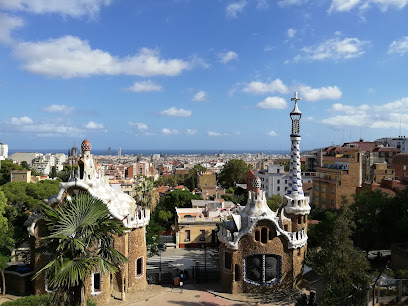
Jardins del Mestre Balcells
Explore the tranquil beauty of Jardins del Mestre Balcells, a serene park in Barcelona's Gràcia district, perfect for relaxation and leisure.

Font Monumental del Passeig de Gràcia
Discover the Font Monumental del Passeig de Gràcia, a stunning fountain that embodies Barcelona's artistic spirit and offers a picturesque spot for relaxation.

Passeig de Gràcia Avenue
Explore the architectural beauty and vibrant culture of Passeig de Gràcia Avenue, Barcelona's iconic boulevard for shopping and modernist masterpieces.

Torre del Rellotge
Explore the captivating Torre del Rellotge in Gràcia, Barcelona - a historical landmark that embodies the vibrant culture and charm of the neighborhood.

Passeig de Gràcia
Explore Passeig de Gràcia, a stunning boulevard in Barcelona known for its architectural marvels, luxury shopping, and vibrant dining scene.
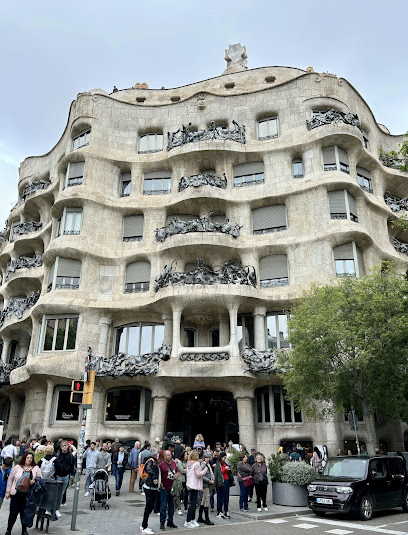
Campanar de Gràcia
Discover the historical charm of Campanar de Gràcia in Barcelona, a beautiful bell tower and cultural landmark in the vibrant Gràcia district.
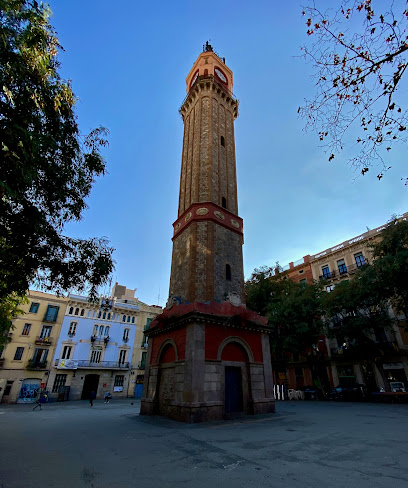
Barri de Gràcia
Experience the artistic flair and vibrant culture of Barri de Gràcia, Barcelona's charming and bohemian neighborhood filled with stunning architecture and local delights.

Unmissable attractions to see
Park Güell
Discover the enchanting blend of nature and Gaudí's architectural genius at Park Güell, a UNESCO World Heritage Site in Barcelona.

Casa Batlló
Discover the breathtaking Casa Batlló, a masterpiece of Catalan Modernism and an architectural marvel in the heart of Barcelona.

Casa Vicens Gaudí
Explore Casa Vicens, Antoni Gaudí's first masterpiece in Barcelona, showcasing unique architecture and rich cultural heritage.

Escalinata monumental
Discover the enchanting Escalinata Monumental in Barcelona's Park Güell, a masterpiece of Gaudí's architecture blending art and nature in a vibrant spectacle.
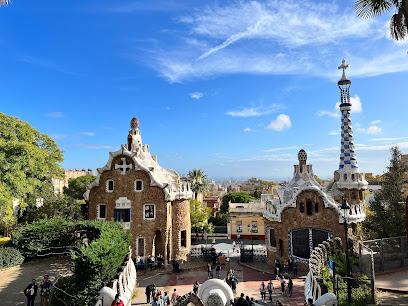
Illa de la Discòrdia
Experience the architectural wonders of Illa de la Discòrdia in Barcelona, a stunning showcase of Catalan Modernism and vibrant city life.

Font Monumental del Passeig de Gràcia
Explore the captivating Font Monumental del Passeig de Gràcia, a stunning fountain that embodies Barcelona's rich artistic heritage and vibrant street life.

Passeig de Gràcia Avenue
Discover the architectural splendor and vibrant atmosphere of Passeig de Gràcia Avenue, Barcelona's premier shopping and cultural destination.
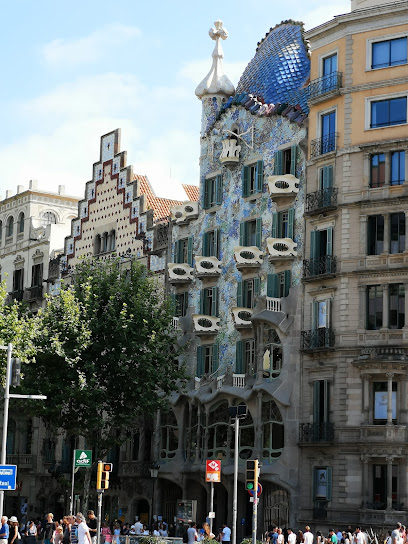
Festa Major de Gràcia
Discover the vibrant Festa Major de Gràcia in Barcelona, where creativity meets community in a spectacular cultural celebration.

Casa mila
Experience the architectural wonder of Casa Mila, a masterpiece by Antoni Gaudí, blending nature and creativity in the heart of Barcelona.
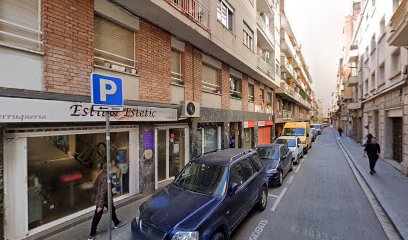
Mural
Experience the vibrant Mural in Gràcia, Barcelona—a stunning expression of art and culture in the heart of a lively neighborhood.

Essential places to dine
La Pepita
Experience the vibrant flavors of Spain at La Pepita, Barcelona's top-rated tapas restaurant in Gràcia.

Taberna del Cura Restaurante - Asador
Discover authentic Spanish flavors at Taberna del Cura Restaurante - Asador in Gràcia, Barcelona's culinary gem featuring grilled specialties and traditional tapas.

La Pubilla
Discover the flavors of Catalonia at La Pubilla, where authentic cuisine meets vibrant atmosphere in the heart of Barcelona's Gràcia district.

Restaurant La Panxa del Bisbe
Experience authentic Catalan flavors at La Panxa del Bisbe in Gràcia, Barcelona—where tradition meets modern cuisine.

Viblioteca - Restaurant Gràcia Barcelona
Experience the best of Catalan cuisine at Viblioteca - a premier wine bar in Gràcia offering delightful tapas and an extensive wine selection.
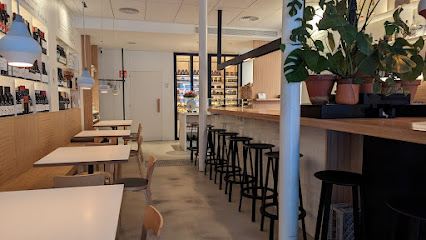
Gasterea
Experience authentic Catalan flavors at Gasterea in Gràcia - where every dish tells a story.

El Disbarat
Experience the vibrant flavors of Catalonian cuisine at El Disbarat in Gràcia - a must-visit for every foodie exploring Barcelona.

Con Gracia
Experience the best of Catalonian cuisine at Con Gracia – where tradition meets modern elegance in every dish.

Morralet - Restaurant Gràcia Barcelona
Experience authentic Catalonian and Mediterranean dining at Morralet in Gràcia, Barcelona – a must-visit for food lovers.

Casa Gracia Restaurant
Experience authentic Catalan cuisine at Casa Gracia Restaurant in Barcelona's vibrant Gràcia district, where every dish tells a story.

Markets, malls and hidden boutiques
Santa Eulalia
Discover the elegance of Santa Eulalia, a fashion landmark in Barcelona offering bespoke clothing, exquisite accessories, and haute couture.
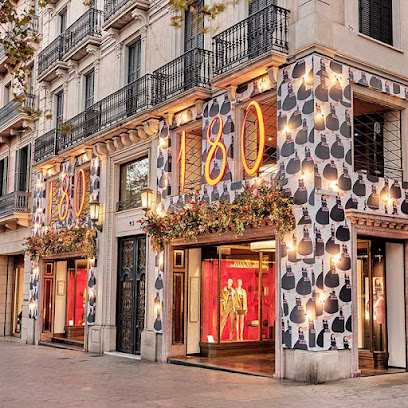
Prada Barcelona
Experience unparalleled luxury shopping at Prada Barcelona, featuring exquisite women's clothing, accessories, and more in the heart of the city.

VERSACE
Discover the essence of luxury fashion at Versace, Barcelona's premier destination for exquisite clothing and accessories that redefine elegance.

Revolution Vintage Clothing
Explore Revolution Vintage Clothing in Gràcia, Barcelona for unique vintage fashion that tells a story and adds flair to your wardrobe.

LLADRÓ Boutique Barcelona
Discover the exquisite world of LLADRÓ Boutique in Barcelona, where fine porcelain artistry meets contemporary design in a vibrant setting.

NOOK - The Concept Store
Explore the essence of Barcelona at NOOK - The Concept Store, a boutique filled with unique fashion and lifestyle treasures in Gràcia.

BOO
Explore BOO, a unique boutique in Gràcia, Barcelona, where local craftsmanship meets contemporary fashion in a vibrant shopping experience.

OrigenStore
Explore OrigenStore in Gràcia, Barcelona: Your destination for unique gifts, stylish clothing, and local fashion treasures.

Shopping Gaudí
Discover unique souvenirs and artistic creations at Shopping Gaudí, a charming gift shop in the heart of Barcelona's vibrant Gràcia district.

Barcelona handmade gift shop
Explore Barcelona's vibrant Gràcia district and uncover a treasure of handmade gifts that capture the essence of local artistry and culture.

Essential bars & hidden hideouts
Old Fashioned
Discover the vibrant cocktail culture of Barcelona at Old Fashioned, where every sip tells a story in a charming Gràcia setting.

ELEPHANTA GINBAR COCTELERIA
Experience the vibrant nightlife at Elephanta Ginbar Cocktaileria in Gràcia, Barcelona, known for its innovative cocktails and lively atmosphere.

Bobby Gin
Experience the vibrant nightlife of Barcelona at Bobby Gin, where expertly crafted cocktails meet a lively atmosphere in the heart of Gràcia.

Bloody Mary Cocktail Bar
Discover the vibrant Bloody Mary Cocktail Bar in Gràcia, Barcelona, where exceptional cocktails meet a lively tapas bar experience.

Bar Pietro
Discover the charm of Bar Pietro, where authentic Barcelona vibes meet delightful drinks and tapas in the heart of Gràcia.

Bar El OtrO
Experience the vibrant nightlife of Barcelona at Bar El OtrO, where cozy ambiance meets delightful tapas and a diverse drink selection.

Bar Salvatge
Discover the charm of Bar Salvatge, a wine bar in Gràcia, Barcelona, where you can enjoy exquisite wines and delightful tapas in a cozy ambiance.

El Ciclista Cocktail Bar
Experience the vibrant nightlife of Gràcia at El Ciclista Cocktail Bar, where expertly crafted cocktails meet a warm, welcoming atmosphere.

Le Standard
Discover the vibrant nightlife of Barcelona at Le Standard, a cocktail bar in Gràcia known for its creative drinks and lively atmosphere.

Almayer Cocktail Bar
Discover Almayer Cocktail Bar in Gràcia, Barcelona – a cozy spot for handcrafted cocktails and vibrant nightlife experiences.

Local Phrases
-
- HelloHola
[oh-la] - GoodbyeAdiós
[ah-dee-ohs] - YesSí
[see] - NoNo
[no] - Please/You're welcomePor favor/De nada
[por fah-vor/deh nah-dah] - Thank youGracias
[grah-thyahs] - Excuse me/SorryPerdón/Lo siento
[pehr-dohn/loh syehn-toh] - How are you?¿Cómo estás?
[koh-moh ehs-tahs] - Fine. And you?Bien. ¿Y tú?
[byehn. ee too] - Do you speak English?¿Hablas inglés?
[ah-blahs een-glehs] - I don't understandNo entiendo
[noh ehn-tyehn-doh]
- HelloHola
-
- I'd like to see the menu, pleaseMe gustaría ver la carta, por favor
[meh goos-tah-ree-ah behr lah kahr-tah, por fah-vor] - I don't eat meatNo como carne
[noh koh-moh kahr-neh] - Cheers!¡Salud!
[sah-lood] - I would like to pay, pleaseMe gustaría pagar, por favor
[meh goos-tah-ree-ah pah-gahr, por fah-vor]
- I'd like to see the menu, pleaseMe gustaría ver la carta, por favor
-
- Help!¡Ayuda!
[ah-yoo-dah] - Go away!¡Vete!
[veh-teh] - Call the Police!¡Llama a la policía!
[yah-mah ah lah poh-lee-see-ah] - Call a doctor!¡Llama a un médico!
[yah-mah ah oon meh-dee-koh] - I'm lostEstoy perdido
[ehs-toy pehr-dee-doh] - I'm illEstoy enfermo
[ehs-toy ehn-fehr-moh]
- Help!¡Ayuda!
-
- I'd like to buy...Me gustaría comprar...
[meh goos-tah-ree-ah kohm-prahr...] - I'm just lookingSolo estoy mirando
[soh-loh ehs-toy meer-ahn-doh] - How much is it?¿Cuánto cuesta?
[kwan-toh kwehs-tah] - That's too expensiveEsto es demasiado caro
[ehs-toh ehs deh-mah-syah-doh kah-roh] - Can you lower the price?¿Puedes bajar el precio?
[pweh-dehs bah-hahr ehl pree-syoh]
- I'd like to buy...Me gustaría comprar...
-
- What time is it?¿Qué hora es?
[keh oh-rah ehs] - It's one o'clockEs la una
[ehs lah oo-nah] - Half past (10)Media (10)
[meh-dee-ah (deh-eez)] - MorningMañana
[mah-nyah-nah] - AfternoonTarde
[tahr-deh] - EveningNoche
[noh-cheh] - YesterdayAyer
[ah-yehr] - TodayHoy
[oy] - TomorrowMañana
[mah-nyah-nah] - 1Uno
[oo-noh] - 2Dos
[dohs] - 3Tres
[trehs] - 4Cuatro
[kwah-troh] - 5Cinco
[theen-koh] - 6Seis
[says] - 7Siete
[syeh-teh] - 8Ocho
[oh-choh] - 9Nueve
[nweh-veh] - 10Diez
[dyehth]
- What time is it?¿Qué hora es?
-
- Where's a/the...?¿Dónde está...?
[dohn-deh ehs-tah] - What's the address?¿Cuál es la dirección?
[kwal ehs lah dee-rehk-syohn] - Can you show me (on the map)?¿Puedes mostrarme (en el mapa)?
[pweh-dehs mohs-trar-meh (ehn ehl mah-pah)] - When's the next (bus)?¿Cuándo es el próximo (autobús)?
[kwan-doh ehs ehl proh-ksee-moh (ow-toh-boos)] - A ticket (to ....)Un billete (a ...)
[oon bee-yeh-teh (ah ...)]
- Where's a/the...?¿Dónde está...?
History of Gràcia
-
Gràcia originated as a small village known as 'Gràcia de Dios' in the late Middle Ages. Initially settled by farmers and artisans, it was largely agrarian and served as a peaceful retreat from the bustling city of Barcelona. The village's charm and proximity to the city attracted wealthy Barcelonians who built summer homes, fostering its growth.
-
The 19th century marked a significant transformation for Gràcia as the industrial revolution took hold. The construction of factories and textile mills led to an influx of workers, and Gràcia began to urbanize rapidly. This period saw the establishment of new streets, public squares, and buildings, reflecting the architectural styles of the time, such as Modernisme.
-
In 1909, Gràcia became the epicenter of social unrest during the 'Tragic Week.' The residents, mainly workers, protested against conscription for the Moroccan War, leading to violent confrontations with authorities. This event highlighted the neighborhood's strong sense of community and its longstanding labor movements, which paved the way for future social and political activism in Barcelona.
-
Gràcia is renowned for its vibrant cultural scene, especially during the 1960s and 70s when artistic expression flourished. The neighborhood is famous for its annual 'Festa Major de Gràcia,' a week-long festival where residents decorate their streets in elaborate themes. This event exemplifies Gràcia's communal spirit and creativity, attracting both locals and tourists alike.
-
Gràcia boasts a rich architectural heritage, with numerous buildings showcasing Modernisme and Noucentisme styles. Notable architects such as Antoni Gaudí and Josep Puig i Cadafalch left their mark on the neighborhood. The Casa Ramos and the Viaducte de Vallcarca are prime examples of the unique aesthetics that characterize Gràcia, making it a fascinating area for architecture enthusiasts.
Gràcia Essentials
-
Gràcia is easily accessible from other neighborhoods in Barcelona. From the city center, take the L3 (Green Line) metro to Diagonal or Fontana stations. Alternatively, buses such as the H10, V17, and 22 connect Gràcia to various parts of the city. If you're coming from El Prat Airport, take the Aerobus to Plaça Catalunya, then transfer to the metro or a bus to reach Gràcia.
-
Gràcia is a compact neighborhood, making it ideal for walking. The metro stations (L3 and L4) facilitate easy access to other areas of Barcelona. Bicycles can be rented at multiple points throughout the city, and Gràcia has several bike lanes. Regular bus services also operate within the area, providing convenient options for longer distances.
-
Gràcia is generally safe for tourists, but like in any major city, it's wise to remain vigilant. Areas around major tourist spots can attract pickpockets, particularly near public transportation hubs. While most of Gràcia is safe, avoid poorly lit streets at night and be cautious in crowded places where distractions can occur.
-
For emergencies, dial 112 for immediate assistance. This number connects you to police, fire, and medical services. Local hospitals and clinics are available for medical emergencies. Always consider traveling with insurance that covers health issues. Pharmacies in Gràcia can help with minor health concerns.
-
Fashion: Do wear comfortable and stylish clothing; Gràcia is known for its bohemian vibe. Don't wear overly flashy jewelry to avoid unwanted attention. Religion: Do respect local customs, especially when visiting churches. Public Transport: Do validate your ticket before boarding. Don't speak loudly on public transport. Greetings: Do greet with a friendly 'Hola!' and a smile. Eating & Drinking: Do try local tapas and café con leche. Don't eat while walking; it's considered impolite.
-
To experience Gràcia like a local, explore its vibrant plazas such as Plaça del Sol and Plaça de la Vila. Enjoy local eateries and avoid tourist traps by seeking out places packed with locals. Visit during the Festa Major de Gràcia in August for a unique cultural experience. Engage with shopkeepers and residents; they are often eager to share stories and recommendations.
Nearby Cities to Gràcia
-
Things To Do in Tarragona
-
Things To Do in Girona
-
Things To Do in Lleida
-
Things To Do in Pas de la Casa
-
Things To Do in Escaldes-Engordany
-
Things To Do in Andorra la Vella
-
Things To Do in Encamp
-
Things To Do in Soldeu
-
Things To Do in Canillo
-
Things To Do in La Massana
-
Things To Do in Arinsal
-
Things To Do in Ordino
-
Things To Do in El Serrat
-
Things To Do in Palma de Mallorca
-
Things To Do in Huesca













